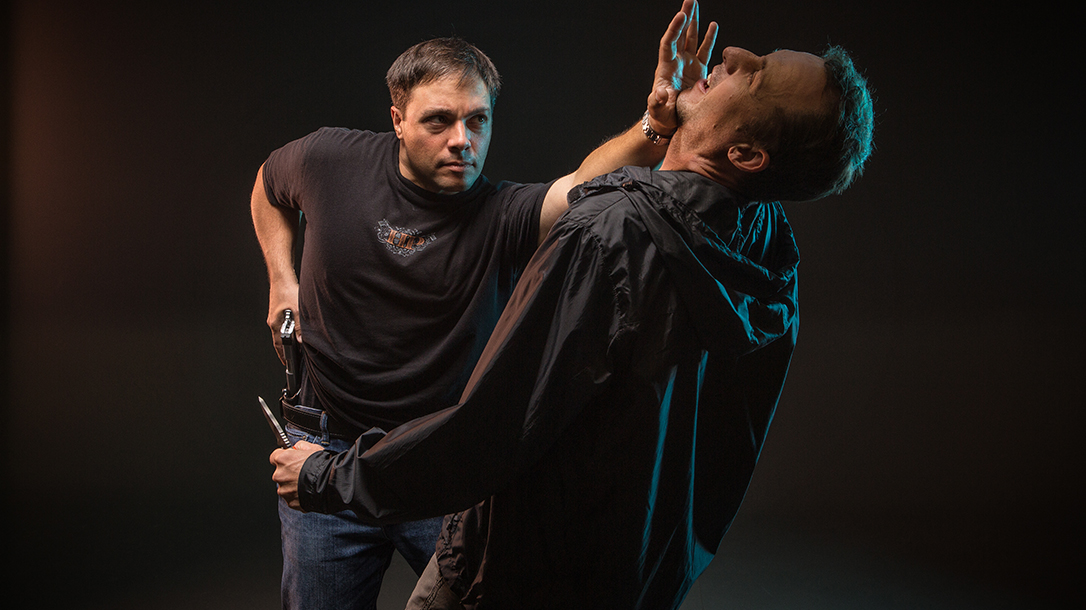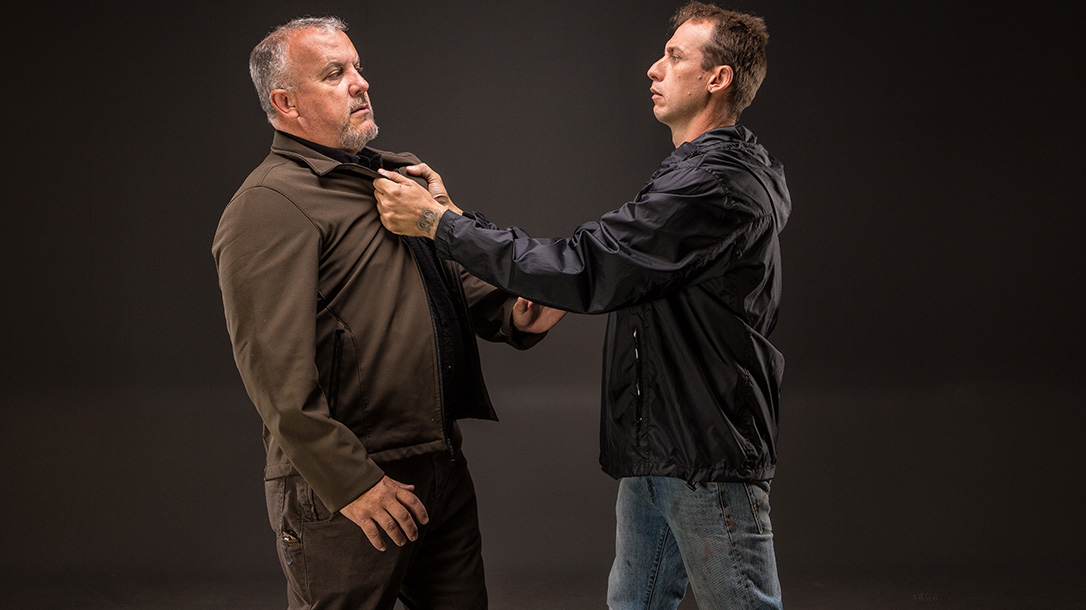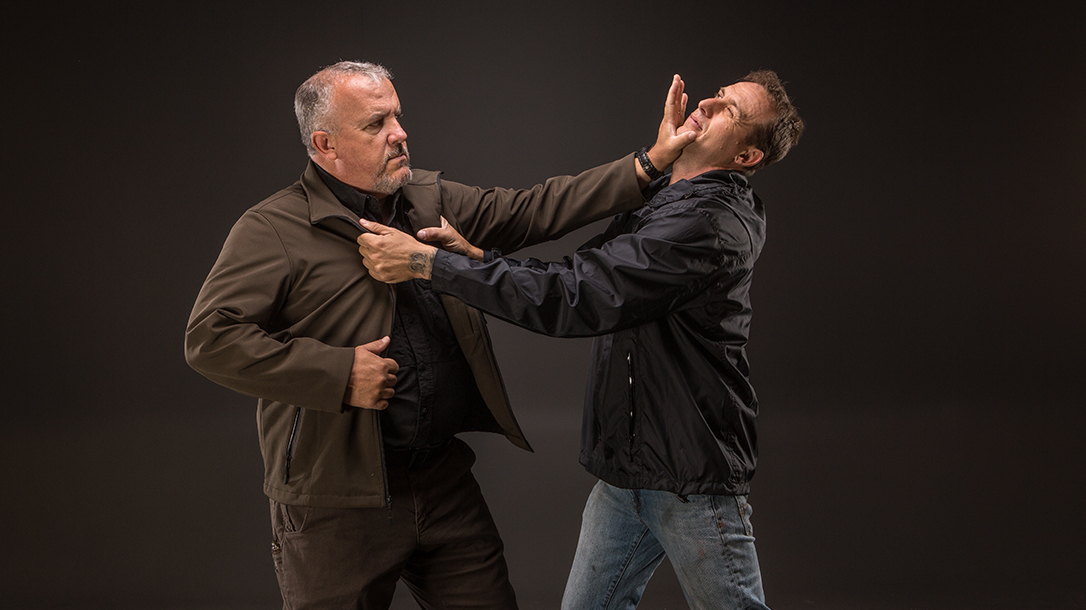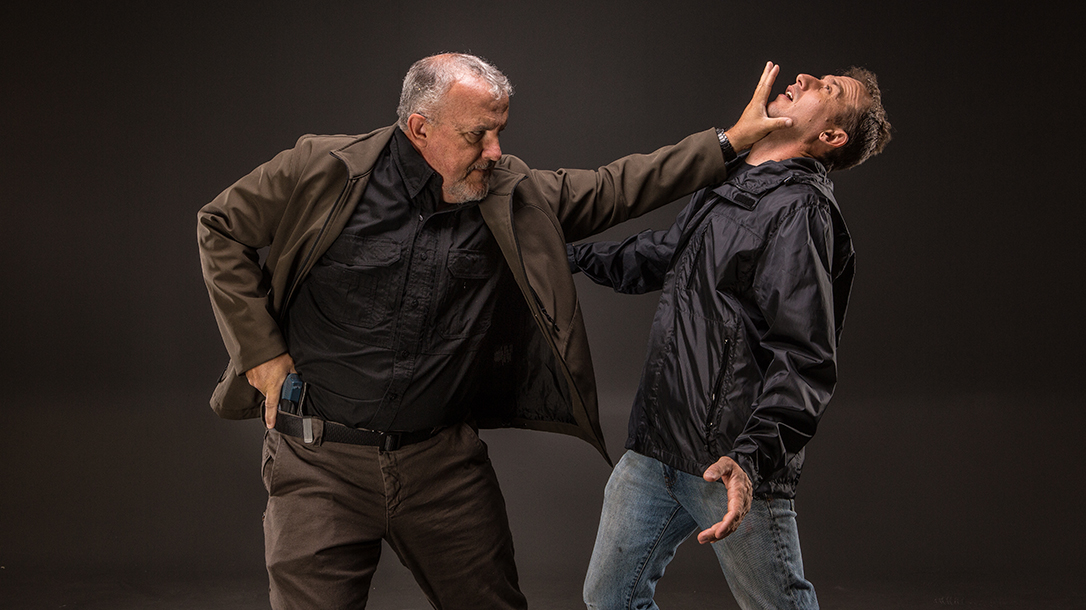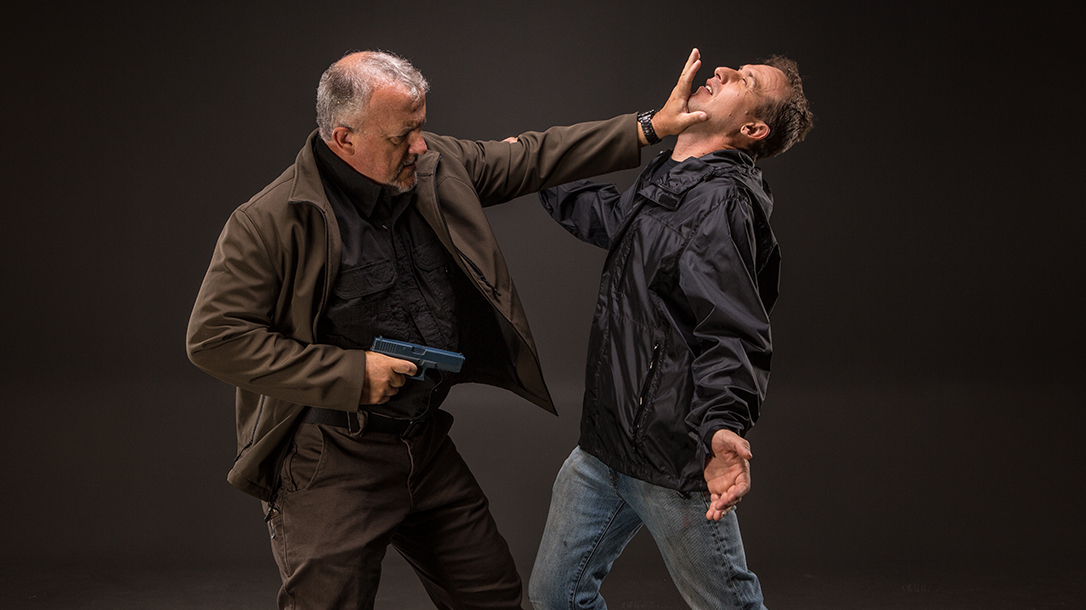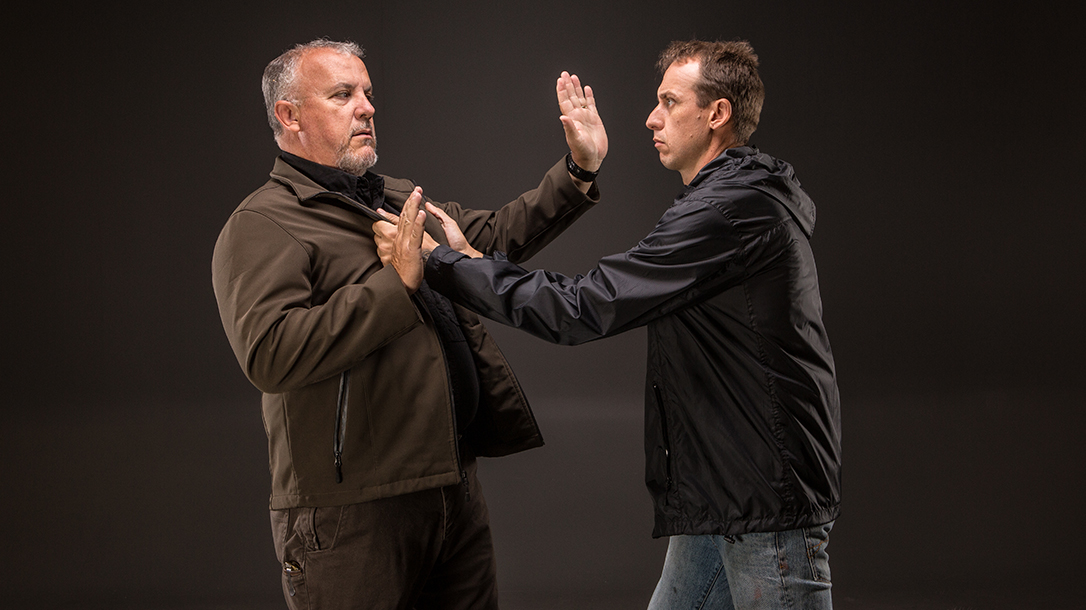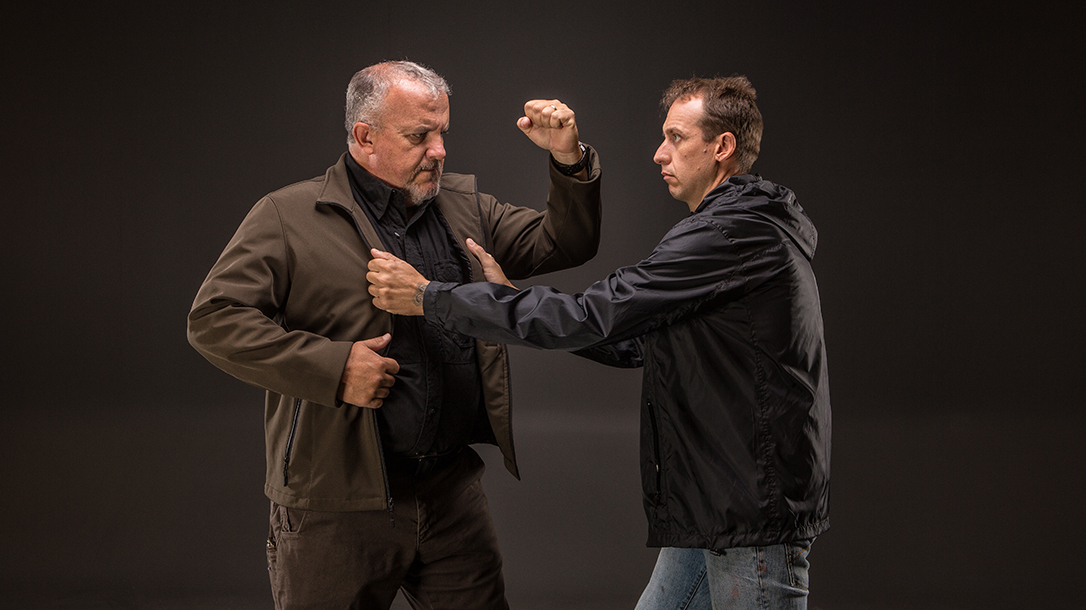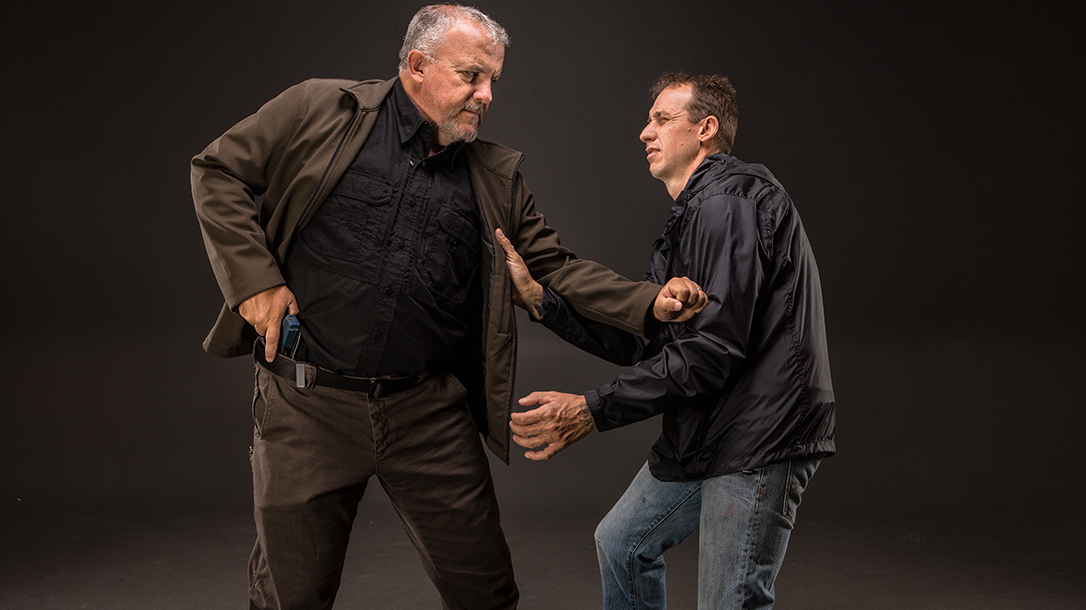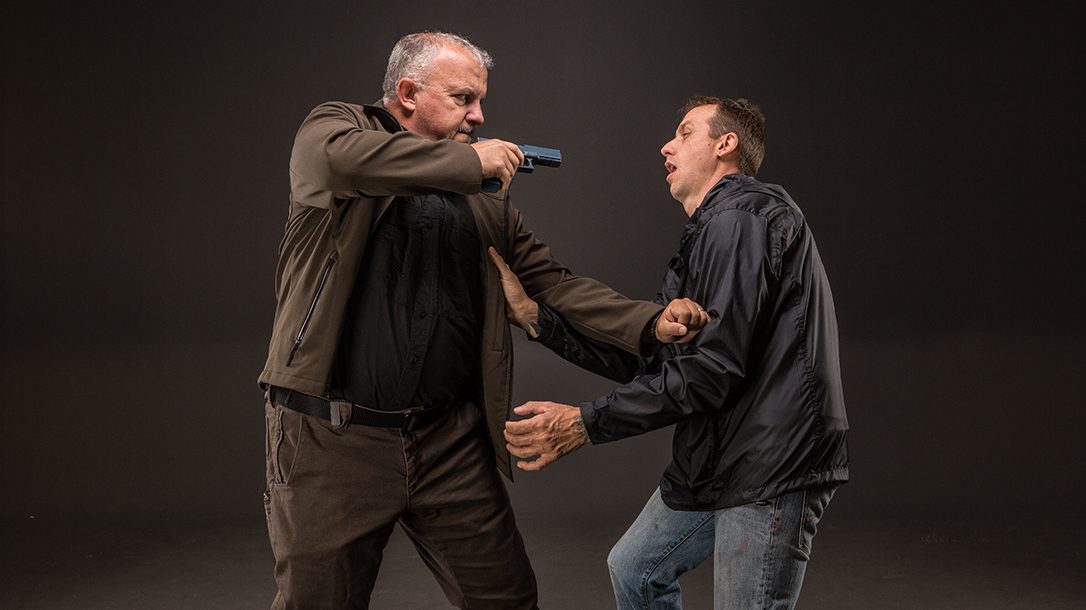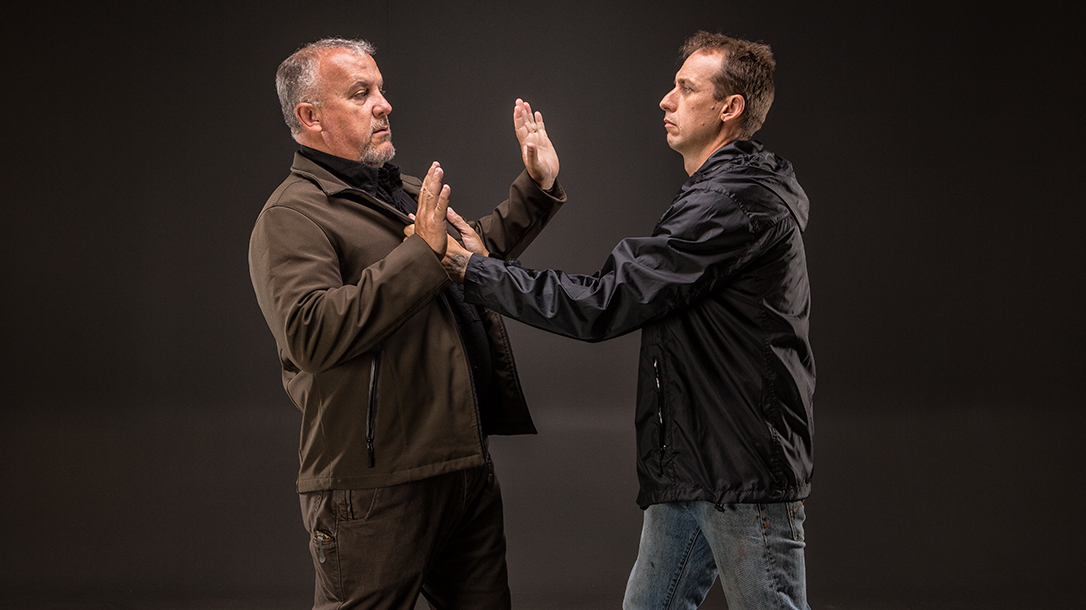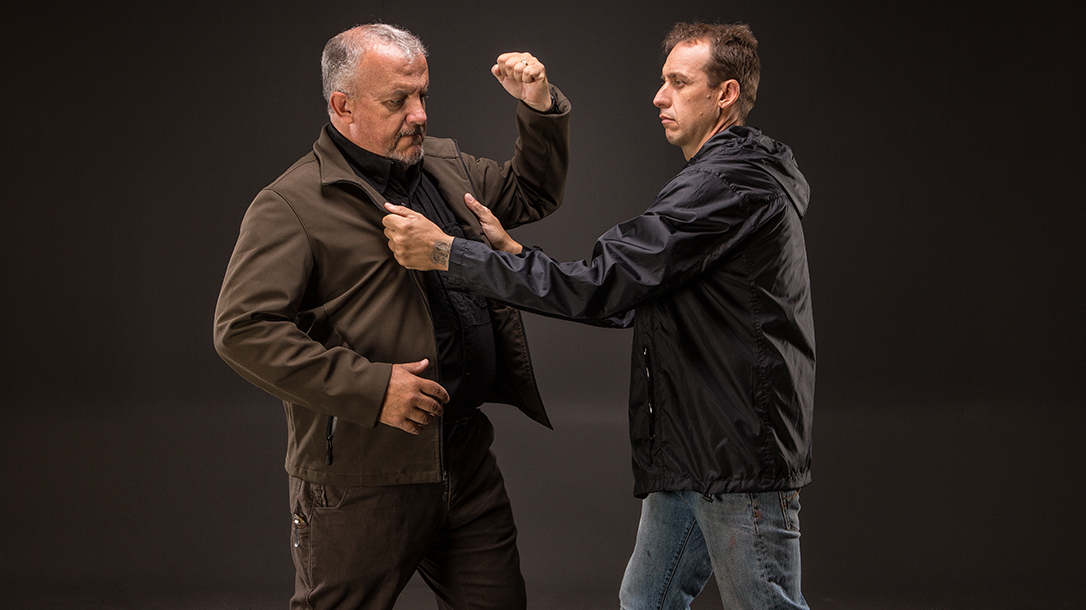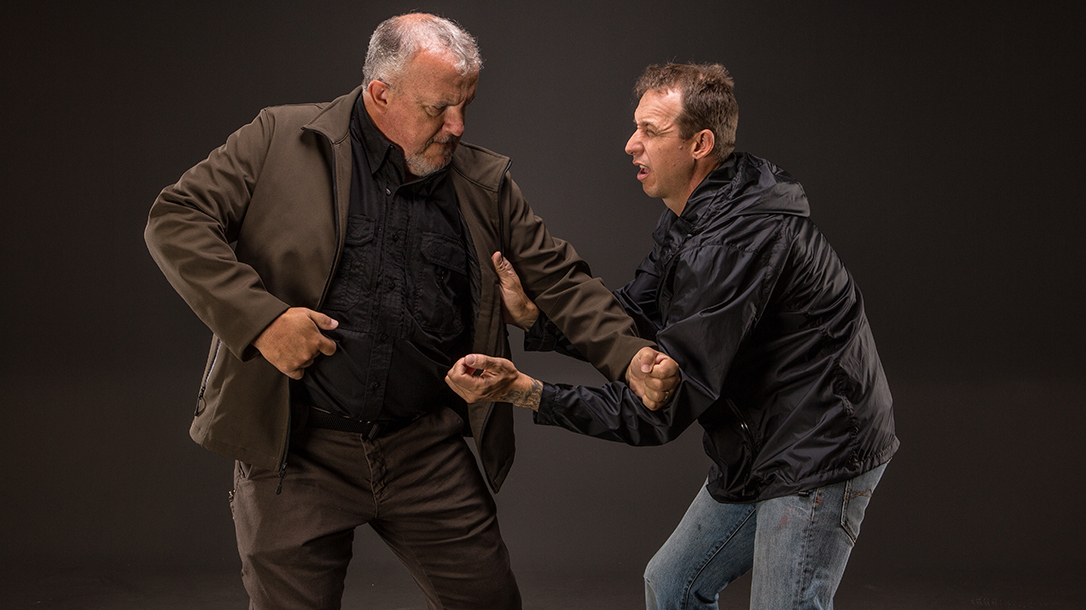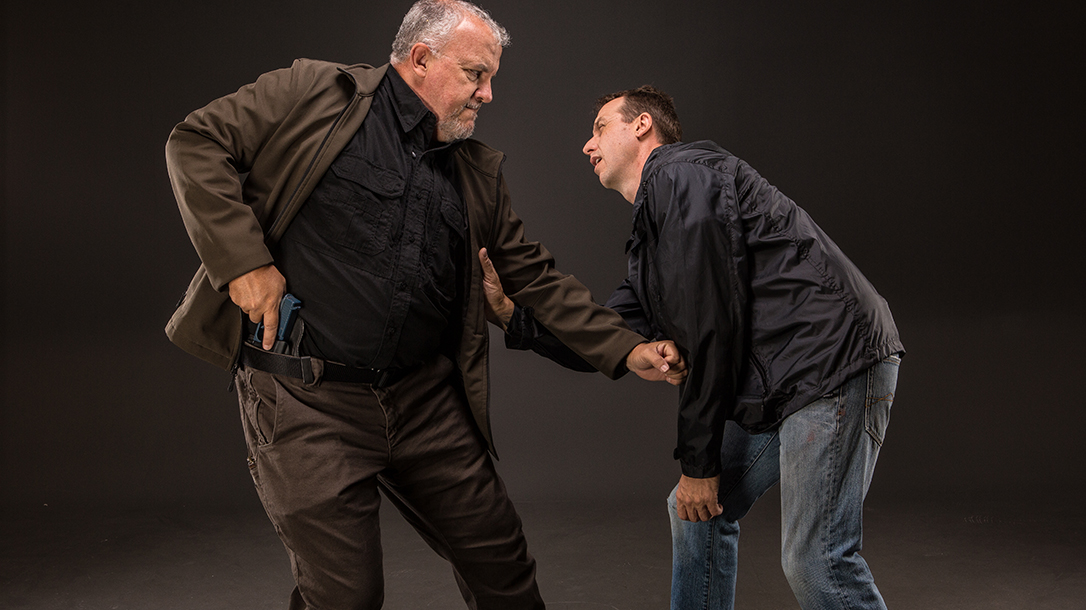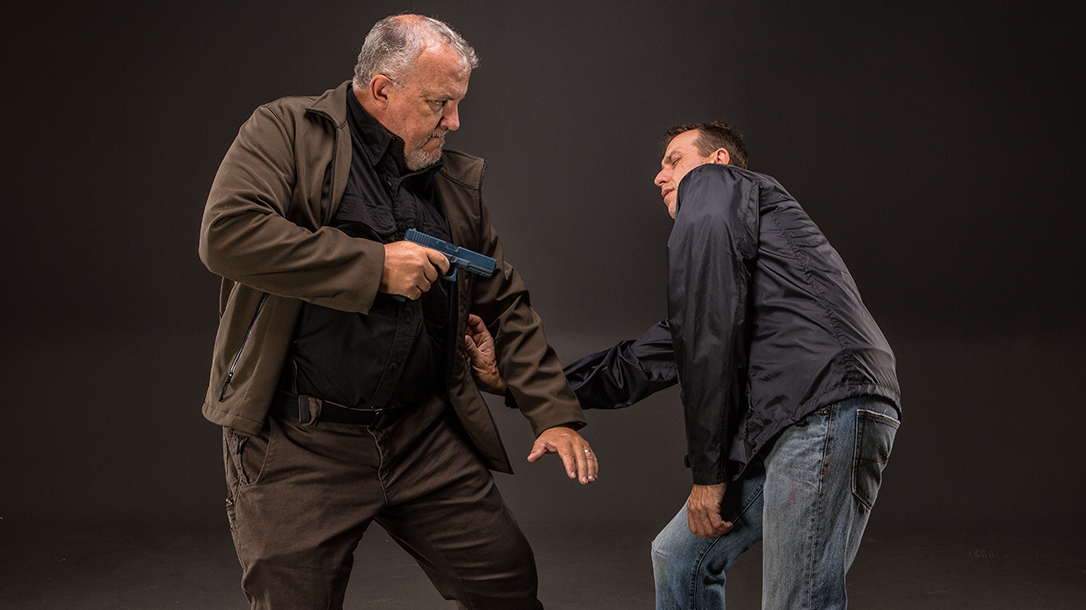There are countless “rules for a gunfight” that have been bandied about for decades if not centuries. Most focus on hard and fast principles like moving, shooting until the fight is over and even mental points like commitment to survival. However, rare is the list that has what I believe to be one of the most important components of winning: You must be able to get your gun into the fight.
The assumption that an attacker will have the good sense to stand far enough away to allow you to present your blaster and go to work is prevalent. The reality is that the dirt bag may be in physical contact with you, breathing down your neck. This leads me to shoot down a cliché the gun world must get away from: “I don’t need no stinkin’ fighting techniques. I carry a handgun.”
This could not be further from the truth on so many levels that it makes my head spin. While I am not saying you need to get a black belt, I would encourage you to understand the basics of close-quarters fighting.
Advertisement — Continue Reading Below
Create Distance
It is difficult, if not impossible, to draw your handgun if someone is up against it. You must get distance between your gun and the bad guy as quickly as possible. The ultimate plan, of course, would be to get them completely off and away from you, but if they are physically assaulting you, this can be extremely tough.
One solid technique for this is simply called the “press and draw.” Use your support hand and press up into the jaw area of the assailant. At the same time, turn your hips away from the attacker. This will put distance between them and the gun and hopefully give you at least a small bit of room to work. Now quickly draw your handgun and engage the threat. Once you have delivered your ballistic response to their attack, break completely away from them and move to safety.
Advertisement — Continue Reading Below
Since there is no one single technique that works against every attack, let’s look at another version of this same idea. This is still essentially a two-part technique that we should strive to do at the same time.
Another Version
This version will incorporate striking the assailant as we are moving our gun away. One quick note here in regard to striking or executing any technique: There can be no half measures or incremental steps. This is a moment of sheer ferocity that in and of itself can stun the assailant. For this striking version, we will focus on the nose and eyes. The nose is especially useful because it is easy to strike and is full of nerves that cause pain as well as physiological responses, such as watering of the eyes.
We will follow the same path as we did with our first technique, but in place of the shove to the face, we will use a closed fist and hammer down onto the bridge of the nose. Not only are we going to smash the nose, but we are also going to focus on trying to stretch the nose tissue downward as we hit. This is a centuries-old pressure point attack, and for good reason. It’s more than just a bop on the nose. You must focus on not just hitting the surface of the nose, but deep inside and beyond the nose. The strike must penetrate the head and make them regret the moment they chose you as a target. As we smash the nose, we turn our hips as we did before and follow through the same way. Get your pistol into the fight and end this.
Advertisement — Continue Reading Below
Fighting Back
One thing that a dedicated dirt bag may try to do is impede your draw once they see it coming. They’ll reach out and grab your arm or hand and block you from getting your trusty blaster into the discussion. If they reach for you in this manner, we will use a principle called “de-fanging the snake.”
While it sounds like something from Sunday morning Kung Fu theater, it is a very effective principle. The fangs in this setting are the hands and arms of the attacker. We are going to majorly disrupt them to the point where they are no longer useful as a weapon. We are going to strike once again, and as before, it will be ferocious. Our target this time will be the meaty area of the forearm up close to the elbow. This is a very sensitive spot and works well at causing dysfunction.
With your free hand, hammer down onto the muscle of the forearm just off-center of the bone. It can be on the inside or outside depending on where you are oriented. Like our nose strike, we want to get serious penetration into the target. Strike with your entire body with the intent of snapping the forearm in half if possible. Even if you miss the specific target, the sheer force of the strike can break their grip. Once the grip breaks, you must once again turn your hips away and get your gun into the fight. Striking is like shooting in many ways. The first “shot” or strike may not get it done, so be ready to hit them again.
Advertisement — Continue Reading Below
‘De-Fanging The Snake’ Part 2
We need a second option for this scenario as well. If the forearms are not a viable target, we can also use the biceps. We will be hitting the bicep in a specific place in order to get the most bang for our buck. Like shot placement in shooting, strike placement is equally important.
The bicep is actually composed of two bands of muscle tissue. We are going to strive to hit the center of those two and get all the way down to the bone. To find this target on yourself, just trace a line up from your thumb along your forearm and up into your bicep. Now press down hard and you will see why this is a good target. To use this one we will set it up just as we did with the forearm. But instead of striking the muscle tissue there, we will target the area between the bicep. I prefer a deep-penetrating hammer fist once again. You want to hit them so hard that they almost wet their pants. After the strike, turn your hips and get your handgun busy.
Mechanical Compliance
The small space that I have been granted to share these principles is limiting beyond belief. There is so much that must be glossed over simply to allow this to fit. That being said, I feel compelled to share a couple more techniques that go beyond striking nerve points. A physical assault is no minor item, and you must respond with sufficient force to repel the attacker and protect your life and possibly the life of a loved one. With that in mind, it is also important to know that real-world combat can be a messy business. This is especially true with our next technique.
Advertisement — Continue Reading Below
One principle that I teach in all combatives classes is that we focus on mechanical compliance as opposed to pain compliance. What I mean by this is that pain will not always be a deterring factor. Some techniques simply do not cause certain people pain. The techniques I have talked about here, however, also cause mechanical dysfunction. Even if they do not cause a great deal of pain, they cause weakness and inhibit the ability of the attacker. This is especially true with our next technique.
Go For The Eyes
In a close-quarter setting, the assailant offers us a variety of targets. One of the most sensitive is the eyes. Several of you are squirming right now because you know what is about to go down. Make a fist, but instead of putting the thumb on the outside of the fingers, rest it on the top. Just like you had given the thumbs up to someone, then dropped your thumb down onto the other fingers. Now press the thumb forward just slighting so that it overhangs the fist. This is now a supported striking and pressing weapon.
Advertisement — Continue Reading Below
The eyes are a tougher target than most people think, and once the eyelids close, they get tougher. With your supported thumb, drive straight into the eye of the attacker. As we did with our strikes, do not stop just at the point of contact. Our goal is to drive our thumb in towards the back of the head. If they have any sense, they will flinch back to escape our attack. However, if not, you will damage their ability to see and in turn fight. If they are under the influence of drugs or alcohol, the pain once again may not be there, but their functioning is diminished or gone. Yes, it’s gruesome, but it’s also very effective.
Hand-to-Hand Combat Fundamentals
As I’ve said, a short article like this can only give you the basics of a complicated topic. But there are some fundamental principles that I can share. These apply across the board and to any technique you should choose to use in a given situation.
First is a psychological point. You must be dedicated to the fight. There is no halfway, nor should there be any attempt at escalation of force models. Save that for the police. If someone attacks you, you must respond with a ferocity that the attacker cannot manage. In addition, dirt bags do not choose targets that they know are going to fight back. Instead, they hope that you comply and fall into submission while they complete their crime.
Advertisement — Continue Reading Below
A second point in this arena is self-confidence. This is especially true for people of smaller stature. So, to that end, I ask: How much does a full-grown leopard weigh? Generally, less than 100 pounds. Yet no one doubts its ability to fight. Have that mindset.
Training is also key. This article can help in a pinch, but if you are serious about protecting yourself and loved ones, you need to train. There are a number of options available, and you should visit some local training locations. Find something that you enjoy that at the same time provides you with solid skills. Furthermore, like your shooting skills, you will need to continue to practice and in turn improve. One of the greatest byproducts of this type of training is an enhanced awareness of your surroundings—something that increases your chances of never having to use anything we have just talked about. Stay safe.
Advertisement — Continue Reading Below
